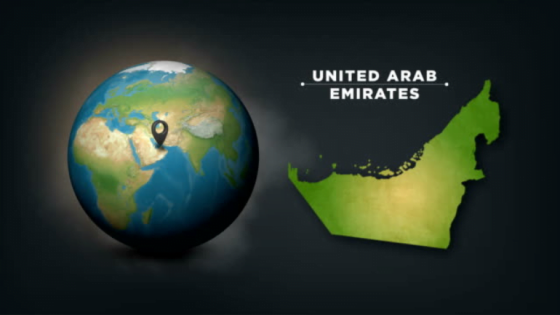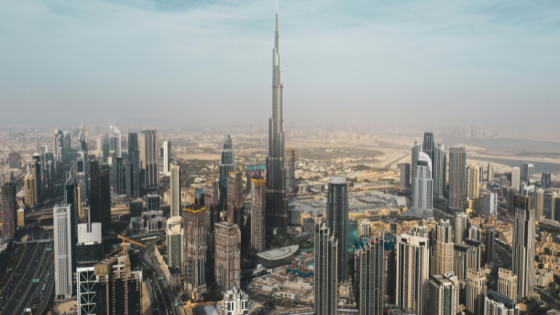Contents
UAE Cartography shows the majority of the country’s geography is made up of sand, with a broad beach down there, and the sand of the Great Arabian Desert covers more than two-thirds of the country (Rub Al Khali). Dunes are moving hundreds of kilometers and endangering oases and cities. Large-scale plantings could only slow the desert’s progress.
UAE Cartography
The boundaries of the United Arab Emirates and neighboring countries with international borders, the emirate, the national capital Abu Dhabi, emirate capitals, major cities, major roads, and major airports are depicted in the UAE cartography collection and topographical mapping illustration.
Read more: UAE Geological Heritage Sites
UAE Geographical Regions
The map of the UAE is divided into two major geographical regions and seven emirates. The majority of the area is made up of a desert hinterland that includes two major swaths of rolling dunes, the Rub Al Khali (the Empty Quarter) to the south and an area of gravel plains and dunes to the north of the Hajar Mountains. Because of their harsh environment and aridity, these areas are largely uninhabited, stretching to the barren coast.
The second major geographical feature is the Hajar Mountains, which extend from the northern emirate of Ras Al Khaimah road to Oman after reaching the easternmost point in Al Fujairah. The UAE is divided into coastal and interior regions by these mountains, which form the highest range in the eastern Arabian Peninsula. The background of mountains supports a diverse range of plant and animal life images, thanks to higher rainfall and cooler temperatures than the surrounding desert plains.
Take a look at: UAE Natural Landmarks
The Western & Eastern Coast Atlas locations
The UAE has flat, desolate coastal plains. It meets the Arabian Gulf along its western coast, which has a coastline of more than 650 kilometers and is characterized by numerous inlets, or khors, and islands. Tidal channels, or sabkhas, dominate Abu Dhabi’s coastal area, as do numerous islands such as Saadiyat Island, Yas Island, and Sir Bani Yas Island. The country has also built a significant number of man-made islands, particularly in the emirate of Dubai. The most well-known are the Palm Jumeirah, Palm Jebel Ali, and the World Islands, which were built for residential, leisure, and tourism purposes.
The eastern coastline of the Fujairah emirate, along the Gulf of Oman, is more rugged and mountainous, with a string of small bays and inlets. This coast has fewer islands, the most notable of which is Snoopy Island, a popular diving and snorkeling destination with wonderful images and sites and a worldview for tourists.
In contrast to its dry landscapes, the UAE has few permanent bodies of water. It has no notable rivers, and the only bodies of freshwater are artificial reservoirs and a few oases, such as Al Ain Oasis, which is fed by underground wells.
Read more: Dubai budget travel tips
Map of the United Arab Emirates
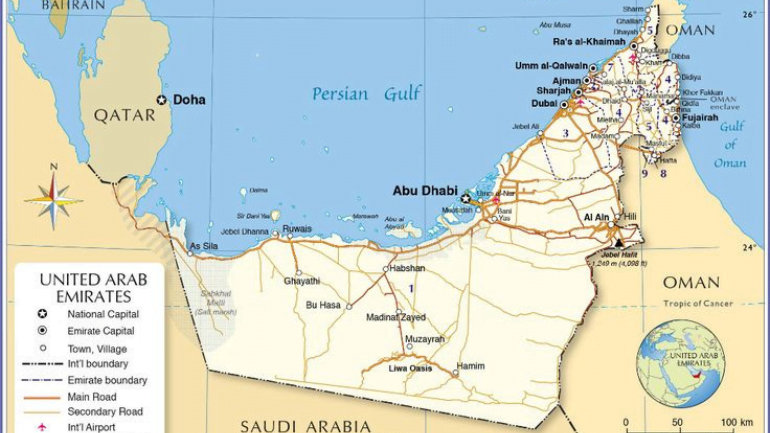
The Detailed map of UAE with cities is located in the eastern part of the Arabian Peninsula and has an area of approximately 83,600 km2. The political map shares borders with Saudi Arabia to the west and south, Oman to the east and southeast, and Iran to the north across the Persian Gulf (also known as the Arabian Gulf). The United Arab Emirates (UAE) is a federation in the Arabian Peninsula’s east, and it is made up of seven distinct emirates. Each emirate retains significant autonomy while participating in federal structures.
Abu Dhabi
It is the largest of the seven emirates, covering 67,340 km2 and accounting for approximately 87% of the UAE’s total land area. It is home to the capital city of the same name, as well as the federal government of the UAE.
Dubai
It is known as the UAE’s economic hub and is second in size only to Abu Dhabi. It includes the famous city of Dubai, which is located on the southern shore of the Arabian Gulf and is one of the world’s most important financial and business centers.
Sharjah
It shares a significant coastline with Dubai on both the Arabian Gulf and the Gulf of Oman. It also includes important enclaves such as Khor Fakkan, Kalba, and Dibba Al-Hisn.
Ajman
The UAE’s smallest emirate is located in the center of the country’s western coast. Despite its small size, it operates a significant port and has a free trade zone that attracts businesses from a variety of industries.
Umm Al Quwain
It is one of the less populated emirates, located just north of Ajman. Along its coast is a significant natural reserve, Al Seneyah Island.
Ras Al Khaimah
It borders Oman’s exclave of Musandam and occupies the northernmost part of the UAE. It is featuring the most interactive, important ports and some of the most fertile agricultural land in the UAE.
Fujairah
The UAE’s only access to the Indian Ocean is located on the UAE’s eastern coast along the Gulf of Oman. The Port of Fujairah is a significant shipping port.
About the United Arab Emirates Map
The United Arab Emirates (UAE) is a country in the Middle East that lies along the coasts of the Gulf of Oman and the Persian Gulf. It has only two neighbors: Saudi Arabia to the southwest and Oman to the east. The UAE is made up of seven independent city-states.
The capital city is Abu Dhabi. However, Dubai is the most populous. Sharjah, Umm al-Quwain, Fujairah, Ajman, and Ras al-Khaimah are the other five city-states. Overall, the UAE is well-known as a major industrial hub for crude oil transit.
The United Arab Emirates has a population of 9,770,529 million people (in 2023), with the male population being twice as large as the female population. Spoken languages are an Emirates variant of Arabic, English is in use.
United Arab Emirates Satellite Map
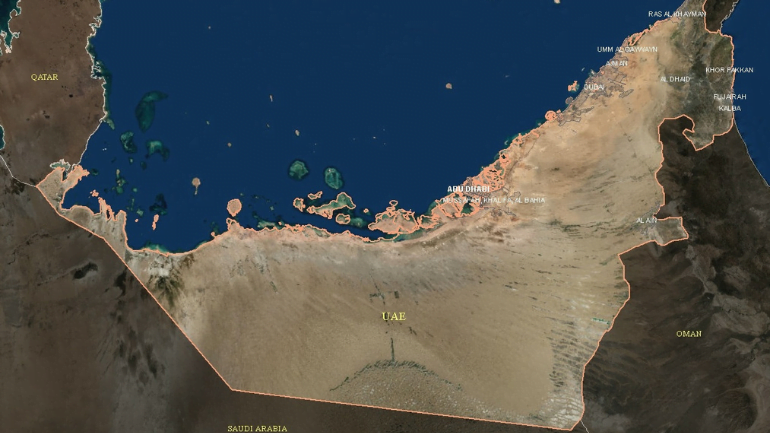
The geographic physical map UAE has a total land area of 83,600 square kilometers. Over 80% of the United Arab Emirates is desert. The Arabian Desert, in particular, spans the western region. The Persian Gulf region has the highest population density, with cities such as Dubai, Abu Dhabi, and Sharjah. The Liwa Oasis is a fertile area in the middle of the Rub Al Khali Desert in the southwestern region.
Take a look at: The Ultimate Guide to the Best Dubai Brunch Places
The UAE Elevation Map
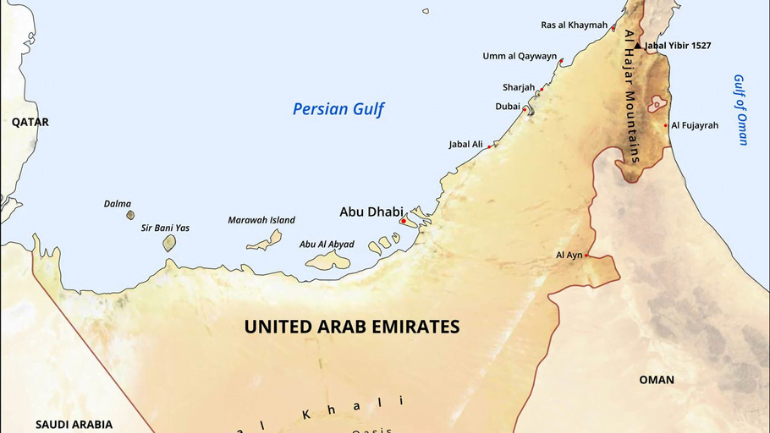
In the south and central regions of the UAE, the terrain consists primarily of rolling dunes and coastal plains. The rugged Al-Hajar Mountains can be found in the east. The Jabal Yibir mountain peak is located within this mountain range. This is the highest peak in the United Arab Emirates, standing at 1,934 m.
Read more: UAE challenges
UAE Administration Map
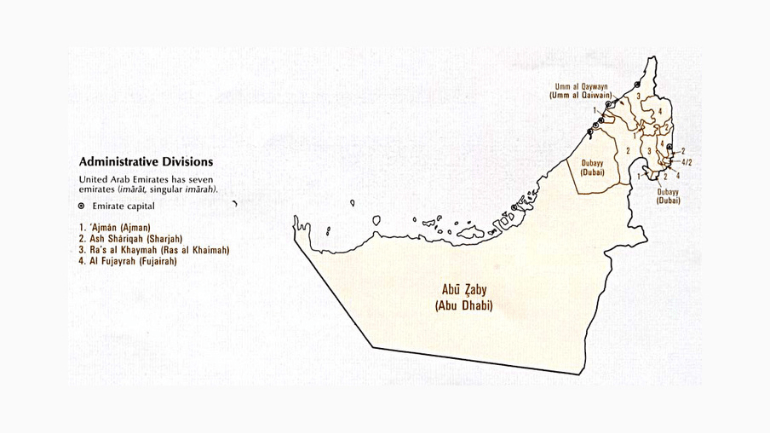
In maps of UAE with cities and towns, The United Arab Emirates is made up of seven separate city-states. Abu Dhabi, Dubai, Sharjah, Umm Al-Qaiwain, Fujairah, Ajman, and Ras al-Khaimah are among them. There are no barriers to travel between the Emirates. In the UAE, they instead form non-contiguous administration divisions. Abu Dhabi is the largest of the emirates, accounting for approximately 87 percent of the total land area, primarily in the federation’s central and southwest regions.
Read more: Dubai Skydiving Experiences
What maps should I use in the UAE?
Here are the most common applications for Maps and Navigation:
1. WAZ App for Maps & Navigation.
2. Mappls MapmyIndia Maps APP.
3. GO-X HUD App for Maps & Radar Navigation.
4. Smart Salik Application.
5. Sohail App for Maps & Navigation.
What kind of geography does the UAE have?
The geography of the Middle East shows flat, barren coastal plains merging into rolling sand dunes of vast desert wasteland, with mountains to the east. The highest point of Jabal Yibir is 1,527 meters, and the lowest point of the Persian Gulf is 0 meters.
What does the UAE stand for in geography?
The United Arab Emirates (UAE) is located in the Arabian Peninsula’s southeast, bordering Oman and Saudi Arabia.
What are the 7 emirates on the UAE map?
The United Arab Emirates (UAE) is a new country formed in 1971 as a federation of seven Emirates: Abu Dhabi, Dubai, Ajman, Umm Al Quwain, Sharjah, Fujairah, and Ras Al Khaimah.
UAE Cartography shows the United Arab Emirates is a desert country in the Arabian Peninsula’s southeast, with coastlines on the Persian Gulf (Arab Gulf) and the Gulf of Oman. The detailed map of UAE, which is a royalty-free UAE map vector, shows maritime borders with Iran and land borders with Oman and Saudi Arabia. It is unclear whether the UAE has a border with Qatar because of a disputed region west of the Emirate of Abu Dhabi.
